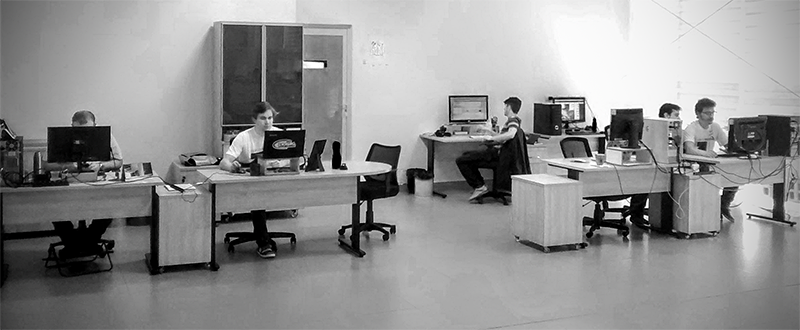When Brazilian dev shop Serrabits was challenged to come up with an online platform to preserve and connect the histories of 4,000 families in 40 cities, they chose DreamFactory. But, this audacious project had humble beginnings.
Three years ago, the core devs worked for a group of Brazilian furniture companies, building bespoke SPA apps with AngularJS and Ruby. They experimented with a variety of tools to abstract their backend layer, but found the security lacking.
“We tested Firebase, Mongolab, CouchDB and ArrestDB, but the lack of security policies in all of them made the implementation in our private datacenter unfeasible,” laments Serrabits CIO Junior Conte.
In late 2014, they saw a presentation by DreamFactory Product Manager Ben Busse on using AngularJS with DreamFactory. They’ve been avid users ever since.

Their first DreamFactory application was an API that tracked the locations of salespeople. They built a mobile app with Ionic and DreamFactory and used the API to report user locations in an AngularJS web app. Later, they added a feature to show customer address locations in the same web app, integrating an external API built for customer data.
Next came an entire project built with DreamFactory’s SQL integration. They began by building the ERD in MySQL Workbench and then created views and triggers in the database itself. The database ended up with 30 tables and various relationships, yielding a moderately complex environment.
The final result was two distinct mobile apps using the same API, one for the final customer and one for their internal salespeople. In both cases users were created in DreamFactory to provide access. Conte was especially impressed by the SQL functionality. “The flexibility and agility we experienced using this feature surprised us,” he notes.
Conte himself has gone on to build two medium and large scale public facing projects with DreamFactory. The first was a crowd-funding site called Captarte. It leveraged the built-in DreamFactory services for SQL, local file storage, and email while using AngularJS for the presentation layer. The second, and most audacious, is an online history platform for Museu da Familia in Brazil.
Translated from museudafamilia.org.br: “The Family Museum is an associative action between families sharing a space on the internet, managed by a database tool to save and catalog the collection of each family. The platform online allows the assembly of digitized archive of photos, videos, letters, recipe books and important documents, such as events and social events, through family relationships by identifying links and degrees of affinity, in order to enhance the fraternal bonds built on their life histories. Each family has its own museum, organizing and adding information, sharing affective value of documents and recalling its history every login.”
Still in progress, Conte has already finished a large part of it by connecting DreamFactory to four SQL databases, Windows Azure Storage and Mandrill for emails. DreamFactory is also the primary service for authentication and access to the families’ private spaces.
As for Serrabits, they have pivoted on their past experience and are releasing a new platform that uses DreamFactory as a primary resource.
“We’re refactoring monolithic APIs and turning them into microservices, using DreamFactory 2.0 as an API proxy and single sign-on for our whole platform. We’re also rebuilding our Ruby based databases, containing the same foreign key information and restrictions, so that we can profit from the DreamFactory SQL API when convenient. We’ll use Oauth, SQL, file storage, email, custom scripting, and event scripts, as well as connecting DreamFactory to other web services,” says Conte.
Serrabits and Junior Conte are also active in the Brazilian dev communities and regularly contribute to open source projects like DreamFactory.
 “Brazil is going through a wave of startups and technology, most are small ideas, but the movement that began there[Silicon Valley] in the 2000s, started coming here in 2012. The main communities are in São Paulo, Rio de Janeiro, Belo Horizonte and Porto Alegre. The community is basically around JAVA, PHP and JS. Ruby has an interesting space, but does not come close to the others. We are working to create a community of developers locally and on Slack. In our region, the main software activity revolves around ERPS. We have about 200 technology companies in our region,” offers Conte.
“Brazil is going through a wave of startups and technology, most are small ideas, but the movement that began there[Silicon Valley] in the 2000s, started coming here in 2012. The main communities are in São Paulo, Rio de Janeiro, Belo Horizonte and Porto Alegre. The community is basically around JAVA, PHP and JS. Ruby has an interesting space, but does not come close to the others. We are working to create a community of developers locally and on Slack. In our region, the main software activity revolves around ERPS. We have about 200 technology companies in our region,” offers Conte.
What began as a need to find a few salespeople has given Junior Conte and Serrabits a springboard to launch their company in a whole new direction. DreamFactory helped them connect their data together so they could connect people together.
We’re proud of our community devs and the work they do.
Go build things and be amazing.
Terence Bennett, CEO of DreamFactory, has a wealth of experience in government IT systems and Google Cloud. His impressive background includes being a former U.S. Navy Intelligence Officer and a former member of Google's Red Team. Prior to becoming CEO, he served as COO at DreamFactory Software.
























 Blog
Blog

